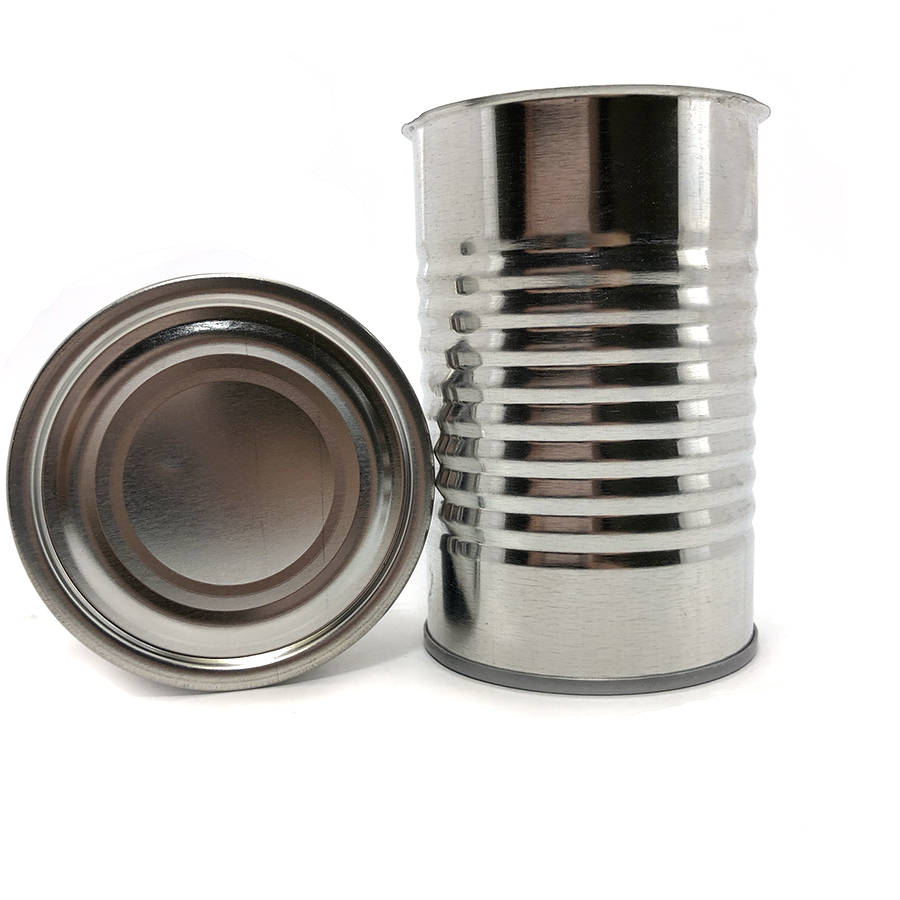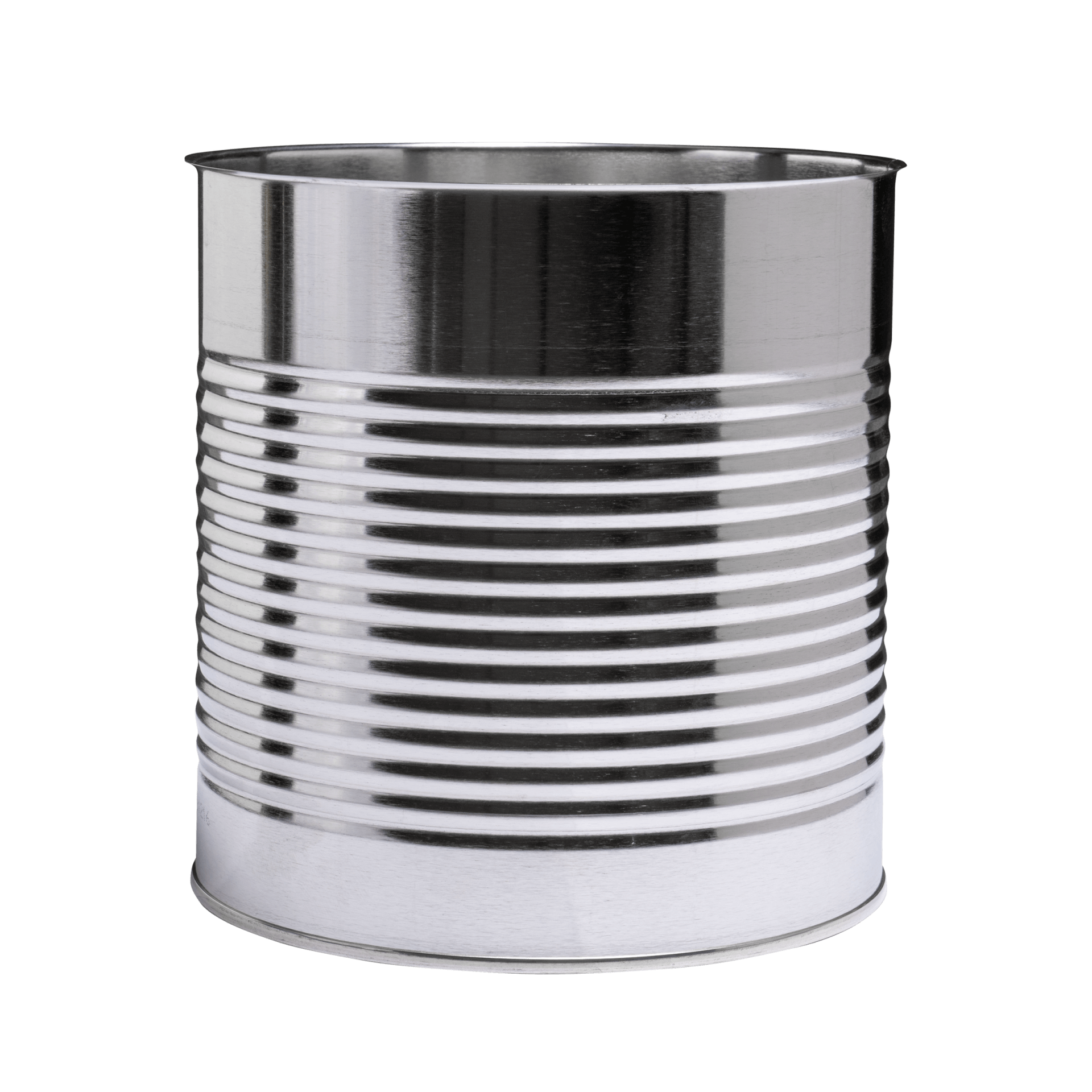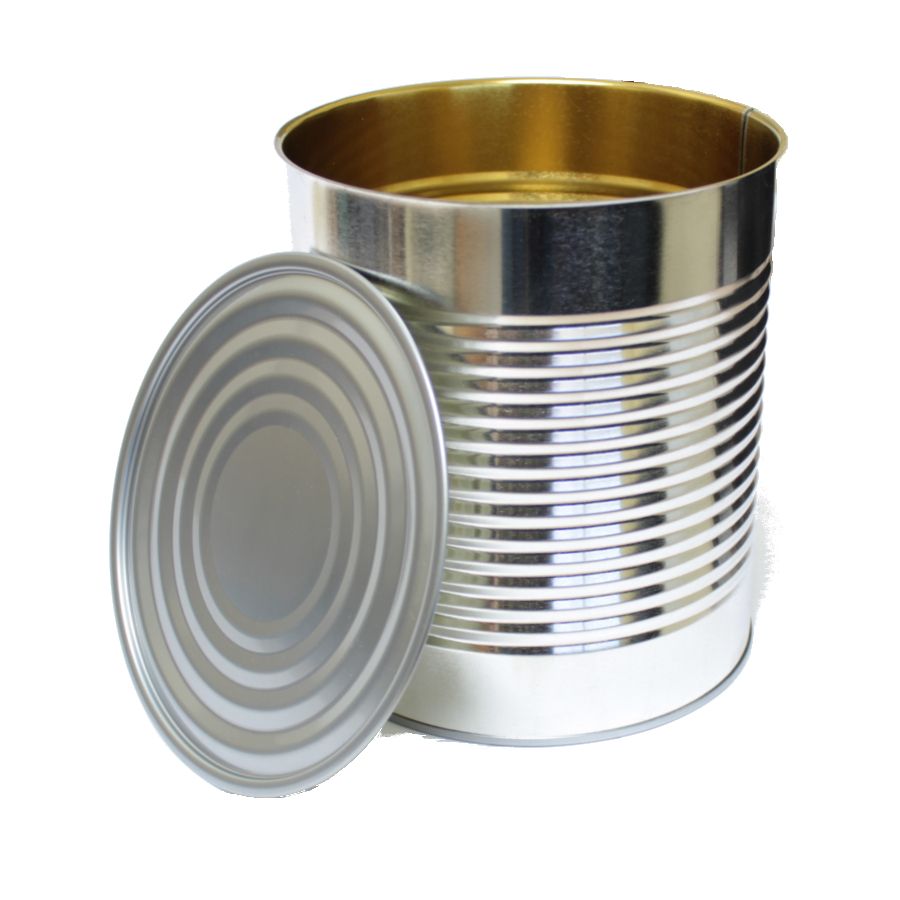Food metal cans have become ubiquitous in our modern world, serving as a convenient and reliable packaging solution for a wide range of products. From canned vegetables and fruits to soups and beverages, these versatile containers play a crucial role in preserving food quality and extending its shelf life.
In this comprehensive guide, we will delve into the fascinating world of food metal cans, exploring their intricate structure, diverse types, and the manufacturing process that brings them to life. We will also examine the advantages and disadvantages of using food metal cans, discuss safety and environmental considerations, and showcase innovative designs and technologies that are shaping the future of this essential packaging format.
Food Metal Can Description
A food metal can is a container made of metal, typically steel or aluminum, used to store and preserve food products. It consists of three main components: the body, the ends, and the closure.
The body of the can is a cylindrical-shaped container that holds the food product. It is made of a thin sheet of metal, usually steel or aluminum, and is coated with a protective layer to prevent corrosion and contamination. The body is often decorated with printed labels or designs that provide information about the product.
Ends
The ends of the can are circular metal discs that seal the openings of the body. They are typically made of the same material as the body and are attached to the body using a seaming process. The ends may be plain or decorated with printed designs.
Closure
The closure is a removable lid or cap that seals the top of the can. It is typically made of metal or plastic and is designed to be easy to open and close. The closure may have a variety of features, such as a pull-tab, a screw-on lid, or a snap-on lid.
Types of Food Metal Cans
Food metal cans are manufactured in various shapes, sizes, and materials to suit different packaging needs. The selection of can type depends on factors such as product characteristics, shelf life requirements, and production processes.
Shape and Size
Food metal cans come in a wide range of shapes and sizes to accommodate different product volumes and packaging requirements. Some common shapes include:
- Cylindrical cans:These are the most common type of food can, with a cylindrical body and flat ends. They are available in various diameters and heights, suitable for packaging a wide range of products, including canned vegetables, fruits, and beverages.
- Rectangular cans:Rectangular cans offer a more space-efficient shape for packaging products like crackers, cookies, and pet food. They can be designed with various depths and heights to accommodate different product volumes.
- Oval cans:Oval cans are often used for packaging fish, meat, and other products that require a more compact shape. They provide a distinctive appearance and can be designed with different sizes and depths.
- Shaped cans:Shaped cans are custom-designed to fit specific product requirements. They can be produced in unique shapes to enhance brand recognition or accommodate special packaging needs.
Material
Food metal cans are primarily made of steel or aluminum, each with its advantages and applications:
- Steel cans:Steel cans are durable, corrosion-resistant, and offer excellent product protection. They are commonly used for packaging canned foods with long shelf lives, such as fruits, vegetables, and soups.
- Aluminum cans:Aluminum cans are lightweight, recyclable, and provide good barrier properties. They are often used for packaging beverages, such as beer, soda, and energy drinks, due to their ability to maintain carbonation and prevent light penetration.
Manufacturing Process of Food Metal Cans

The manufacturing process of food metal cans involves several steps, each crucial for ensuring the quality and safety of the final product. These steps include raw material preparation, forming, sealing, and coating.
Raw Material Preparation
The first step is preparing the raw material, which is typically steel or aluminum. The metal is cleaned, annealed (softened by heating and cooling), and then coated with a thin layer of tin or other protective material to prevent corrosion and improve solderability.
Forming
Next, the prepared metal is formed into the desired shape of the can. This can be done using a variety of techniques, such as drawing, ironing, and necking. Drawing involves pulling the metal through a series of dies to reduce its diameter and increase its length.
Ironing involves smoothing the surface of the can and reducing its thickness. Necking involves reducing the diameter of the can at one end to create a neck for the lid.
Sealing
Once the can is formed, it is sealed to ensure its contents remain safe and protected. This is typically done by soldering or welding the side seam and attaching the lid. Soldering involves joining two pieces of metal using a solder, which is a low-melting-point metal alloy.
Welding involves fusing two pieces of metal together using heat and pressure.
Coating
The final step in the manufacturing process is coating the can to protect it from corrosion and enhance its appearance. This can be done using a variety of materials, such as lacquer, enamel, or plastic. Lacquer is a clear or colored coating that is applied to the can’s surface.
Enamel is a hard, durable coating that is often used for food cans. Plastic coatings are applied to the inside of the can to prevent the contents from coming into contact with the metal.
Advantages and Disadvantages of Food Metal Cans

Food metal cans are widely used in the food industry for packaging various products. They offer several advantages and disadvantages compared to alternative packaging materials.
Advantages
- Protection:Metal cans provide excellent protection against external factors such as moisture, oxygen, and light. This helps preserve the quality and shelf life of the food.
- Durability:Metal cans are robust and can withstand rough handling and transportation. They are resistant to punctures and crushing, ensuring the safety of the food inside.
- Recyclability:Metal cans are highly recyclable, which reduces waste and promotes sustainability. The recycled material can be used to produce new cans or other products.
- Cost-effective:Metal cans are relatively inexpensive to produce and can be manufactured in bulk, making them a cost-effective packaging option.
- Versatile:Metal cans can be used to package a wide range of food products, from canned tomatoes to tuna fish. They can also be customized with different sizes, shapes, and designs.
Disadvantages
- Weight:Metal cans are heavier than some alternative packaging materials, which can increase transportation costs.
- Corrosion:Metal cans can corrode over time, especially if they are exposed to moisture or acidic foods. This can affect the integrity of the can and the safety of the food inside.
- Bisphenol A (BPA):Some metal cans contain a lining made of BPA, which has been linked to health concerns. However, BPA-free cans are becoming increasingly available.
- Limited transparency:Metal cans do not allow consumers to see the food inside, which can be a disadvantage compared to transparent packaging materials.
Overall, food metal cans offer several advantages, including protection, durability, recyclability, cost-effectiveness, and versatility. However, they also have some disadvantages, such as weight, corrosion, BPA concerns, and limited transparency. When choosing packaging for food products, it is important to consider the specific needs of the product and the advantages and disadvantages of different packaging materials.
Safety and Environmental Considerations

Food metal cans are regulated by stringent safety standards to ensure the safety of consumers. These standards cover the materials used in the production of cans, the manufacturing process, and the final product. Cans must meet specific requirements for lead and other heavy metal content, as well as for the absence of harmful chemicals that could leach into food.
The environmental impact of food metal cans is a growing concern. Metal cans are not biodegradable and can take hundreds of years to decompose in landfills. However, there are several initiatives underway to promote the recycling of metal cans. Recycling metal cans reduces the amount of waste sent to landfills and conserves natural resources.
Sustainable Disposal Practices
There are several sustainable disposal practices that can be adopted to minimize the environmental impact of food metal cans. These practices include:
- Recycling: Metal cans can be recycled and reused, reducing the amount of waste sent to landfills.
- Composting: The organic contents of food metal cans can be composted, providing nutrients for plants.
- Landfilling: Metal cans that cannot be recycled or composted should be disposed of in landfills in a responsible manner.
Design and Innovation in Food Metal Cans
The food metal can industry is constantly evolving, with new designs and technologies emerging to meet the changing needs of consumers and manufacturers. These innovations are driven by factors such as convenience, sustainability, and safety.
One of the most significant trends in can design is the move towards more sustainable packaging. This includes the use of recycled materials, lightweight designs, and biodegradable coatings. For example, some manufacturers are now using aluminum cans made from 100% recycled aluminum, which significantly reduces the environmental impact of the packaging.
Another important trend is the development of more convenient packaging. This includes features such as easy-open lids, resealable closures, and stackable designs. For example, some manufacturers are now offering cans with built-in straws or spouts, which makes it easier to consume beverages on the go.
Finally, there is a growing emphasis on safety in the food metal can industry. This includes the use of tamper-evident seals, child-resistant closures, and protective coatings. For example, some manufacturers are now using cans with special coatings that prevent the growth of bacteria, which helps to ensure the safety of the food inside.
Innovative Can Designs
- Shaped cans:These cans are designed to resemble the shape of the food they contain, such as fruit or vegetables. This can make them more appealing to consumers and help them stand out on the shelf.
- Textured cans:These cans have a textured surface that can be used to create a variety of visual effects. This can make them more visually appealing and help them to stand out from the competition.
- Metallic cans:These cans are made from a thin layer of metal that is laminated to a paperboard substrate. This gives them the look and feel of metal cans, but they are lighter and less expensive to produce.
- Plastic cans:These cans are made from a variety of plastics, such as polyethylene terephthalate (PET) and polypropylene (PP). They are lightweight, shatterproof, and can be recycled.
Advanced Can Technologies
- Easy-open lids:These lids can be opened with a simple pull tab, making them easy to use for consumers of all ages.
- Resealable closures:These closures allow consumers to reseal the can after opening, which helps to keep the food fresh.
- Stackable designs:These designs allow cans to be stacked on top of each other, which makes them easier to store and transport.
- Protective coatings:These coatings help to protect the food inside the can from bacteria and other contaminants.
Future of Food Metal Cans
The future of food metal cans in the packaging industry is promising, with advancements in technology and consumer preferences driving innovation. As the global population grows and urbanization continues, the demand for convenient and shelf-stable food packaging is expected to increase.
Emerging technologies, such as smart packaging and biodegradable coatings, are expected to transform the food metal can industry. Smart packaging can provide consumers with information about the product’s freshness and origin, while biodegradable coatings can reduce the environmental impact of food packaging.
Sustainability
Sustainability is a major driver of innovation in the food metal can industry. Consumers are increasingly demanding packaging that is environmentally friendly and recyclable. Metal cans are already highly recyclable, and manufacturers are exploring ways to make them even more sustainable.
For example, some companies are developing metal cans made from recycled aluminum, which has a lower carbon footprint than traditional aluminum.
Convenience
Convenience is another key factor driving innovation in the food metal can industry. Consumers are looking for packaging that is easy to open and reseal. Metal cans with easy-open lids and resealable tops are becoming increasingly popular. Some companies are also developing metal cans that can be heated in the microwave or oven, providing consumers with even more convenience.
Design and Innovation, Food metal can
Design and innovation will continue to play a major role in the future of food metal cans. Metal cans can be printed with attractive designs that appeal to consumers. Some companies are also developing metal cans with unique shapes and sizes, which can help to differentiate their products from the competition.
FAQ Resource
What are the primary components of a food metal can?
The main components of a food metal can include the body, ends, seams, and coatings. The body forms the cylindrical shape of the can, while the ends are attached to seal the contents inside. Seams join the body and ends together, and coatings provide protection against corrosion and ensure food safety.
What are the different types of food metal cans based on shape?
Food metal cans come in various shapes, including cylindrical, rectangular, and oval. Cylindrical cans are the most common type, suitable for a wide range of products. Rectangular cans are often used for products that require more space, such as soups and sauces.
Oval cans are ideal for products that need to be stacked easily, such as sardines.
How are food metal cans manufactured?
The manufacturing process of food metal cans involves several steps, including raw material preparation, forming, sealing, and coating. Raw steel or aluminum is rolled into sheets, which are then cut and formed into the desired shape. The ends are attached to the body using a double seam, and the can is then coated to protect it from corrosion and ensure food safety.
